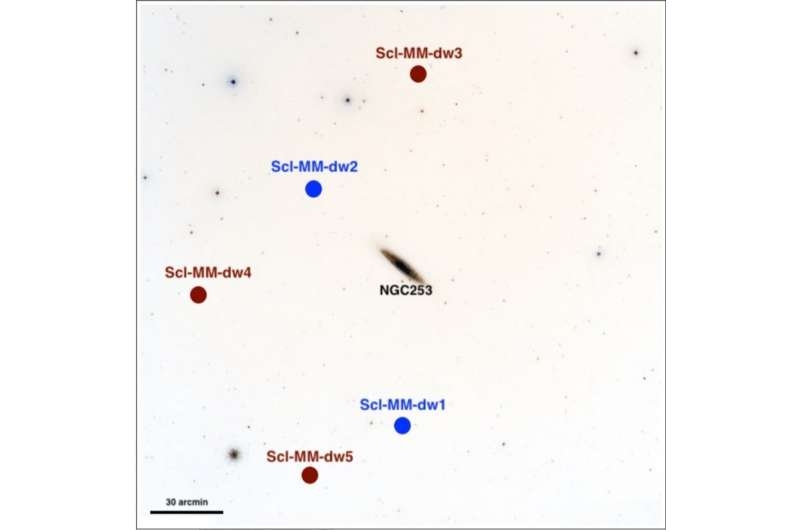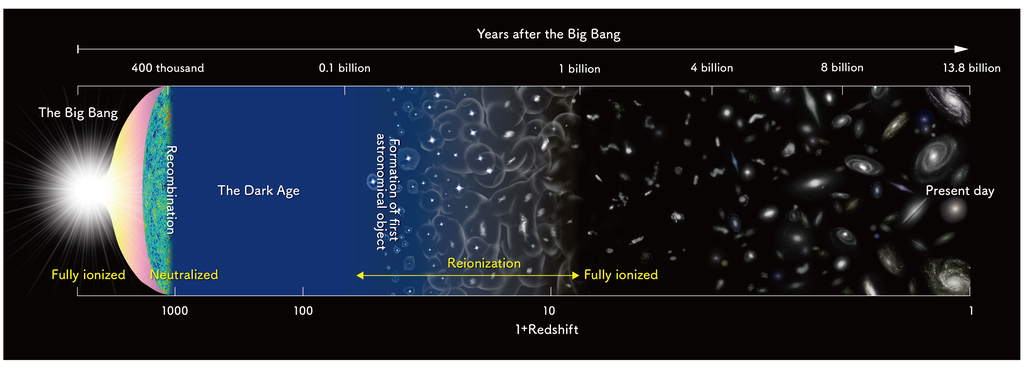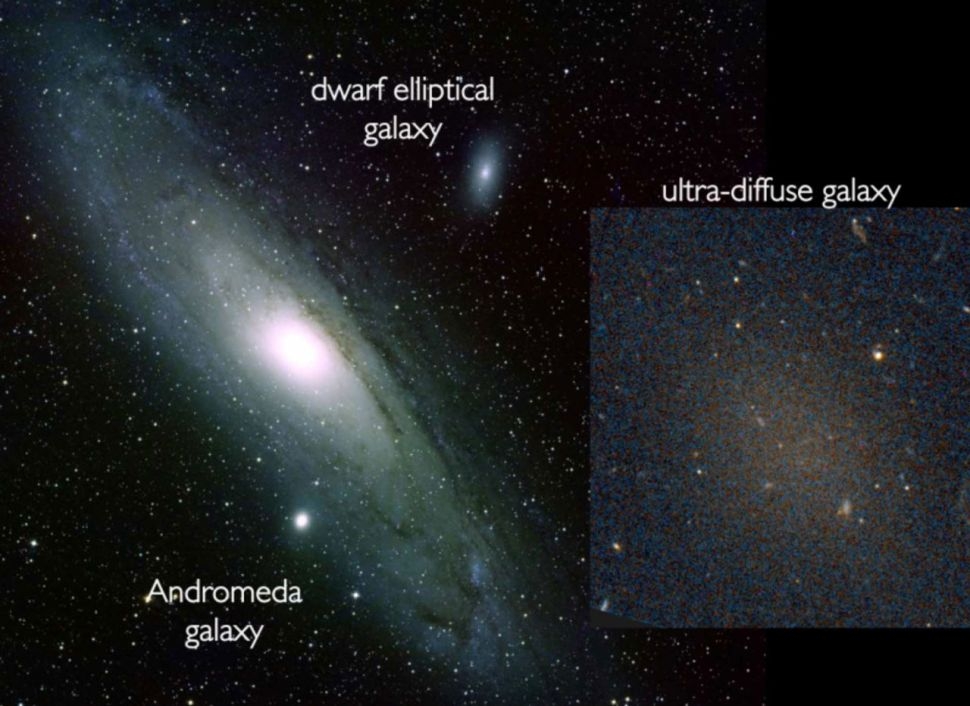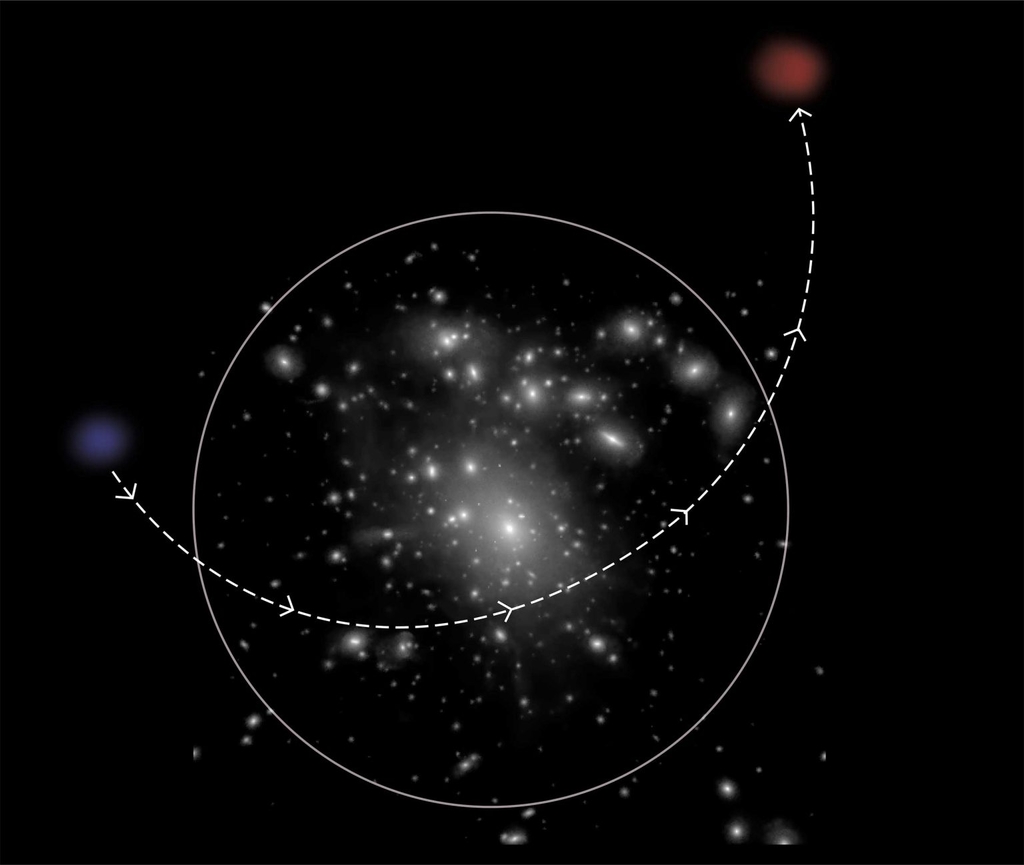Special types of dwarf galaxies have been spotted

Whether they're ultra-faint or ultra-diffuse, dwarf galaxies have a lot to tell us about how our Universe came to look like it does today.
The Panoramic Imaging Survey of Centaurus and Sculptor (PISCeS) project is a survey that looks for faint galaxies by analyzing data from the Dark Energy Survey; recently, the PISCeS team turned their attention to NGC 253, a 11.4 million light-years distant galaxy at the heart of the Sculptor group. Two Ultra-Faint Dwarf Galaxies (UFDs) had already been detected around NGC 253, with additional new Hubble Space Telescope images they found another three - Scl-MM-dw3, Scl-MM-dw4 and Scl-MMdw5, all estimated to be over 12 billion years old.

This age is the main reason why astronomers are so interested in these hard-to-detect objects: they are the best way to obtain information about the early Universe, specifically the period of reionisation. In Cosmology, the study of the history of our Universe, this is a significant era that ended when the Universe was about 1 billion years old, when the energetic light from the first stars could split hydrogen atoms back into protons and electrons, i.e., ionize them. Effectively, this made the Universe transparent again and called an end to the “Dark Age”. Anyway, UFDs are the least luminous and least chemically evolved galaxies that we know, but they are also the most dark matter dominated. This supports the idea that galaxy and star formation in smaller dark matter halos were suppressed by the influence of reionization, so that the smallest and least evolved relics from reionization are these UFDs.

Back to NGC 253’s companions, number 3 is the smallest at 724 light-years across and 110 000 solar masses. As a reference point the Milky Way’s diameter is of the order of 100 000 light-years and its mass is estimated at 1.5 trillion solar masses. Scl-MMdw5 is the largest of the trio with 140 000 solar masses, and also the farthest away, 12.71 million light-years away from Earth and 313 000 light-years away from NGC 253. The most interesting fact about these three UFDs though, is that with their intrinsic luminosities with magnitudes between -7.5 and -7.24, they are among the faintest galaxies identified beyond the Local Group, the cluster in which the Milky Way lies.

UFDs are not to be confused with Ultra-Diffuse Galaxies (UDGs), in which as the name suggests the matter, including stars, gets spread out over large distances – for an UDG with a size comparable to the Milky Way’s, there will be somewhere between a factor of 10 and 1000 times less stars. The very first dwarf galaxy of this type was only discovered in 2015, but recent computer simulations are already pointing to potential formation scenarios.

These models specifically focused on quenched galaxies, i.e., those where no star formation occurs. The team co-led by Laura Sales, from the University of California, Riverside, was interested in explaining the presence of isolated quenched galaxies – typically, they are found as part of clusters or groups where larger galaxies “steal” their gas , preventing any further star formation to happen. Isolated UDGs could get explained with backsplash orbits, where they would initially have been satellites of another galactic group where interactions led to the removal of the gas but would have such an elliptical orbit around that group or cluster that the UDG appears isolated now.
With the TNG50 simulation including this hypothesis, the researchers modelled galaxies with similar properties to the observed isolated ones, including a dark matter halo that is much more extended than for a “normal” dwarf galaxy. This suggests that at least some UDGs are “failed Milky Ways”, or “normal” galaxies where not enough star formation could happen. Further investigations into these curious objects are planned, notably using the Keck telescope in Hawaii, which will look at some isolated quenched galaxies in the Virgo Cluster, the closest cluster to Earth – not to be mistaken for the Virgo Supercluster, the Milky Way’s Local Group is part of that Supercluster. More powerful instruments like the Large Synoptic Survey Telescope or the Roman Space Telescope will be able to detect an even greater number.
Whether it's with reionization or failed Milky Ways, both types of dwarf galaxies are fascinating features that give clues about the mechanisms at play in the formation of our Universe.
Cover Image: Three new dwarfs, Martínez-Delgado et al., 2021
Image Credits:
1 - DSS Image with NGC 253, Mutlu-Pakdil et al., 2021
2 - Cosmology Timeline, NAOJ
3 - An UDG compared to Andromeda and NGC 205, Schoening/Harvey/van Dokkum/Hubble Space Telescope
4 - UDG path, V. Rodriguez
